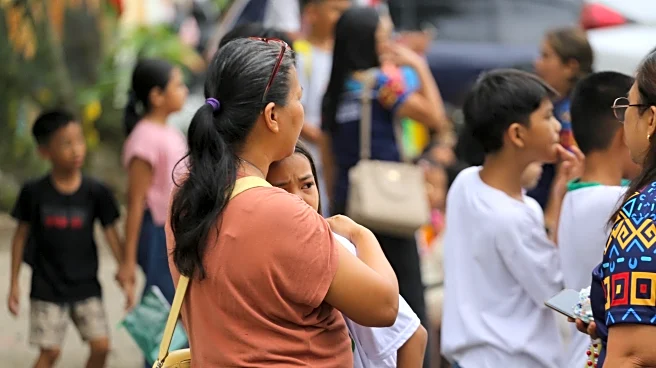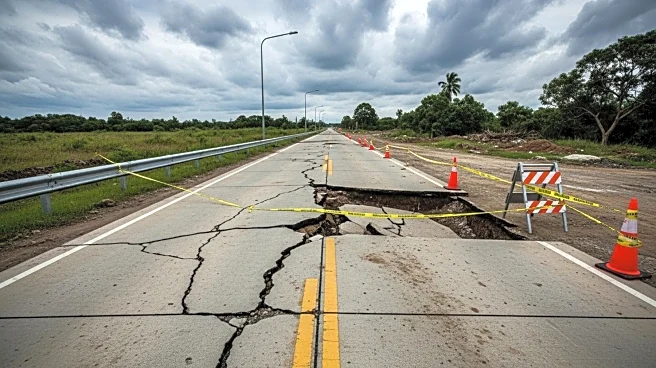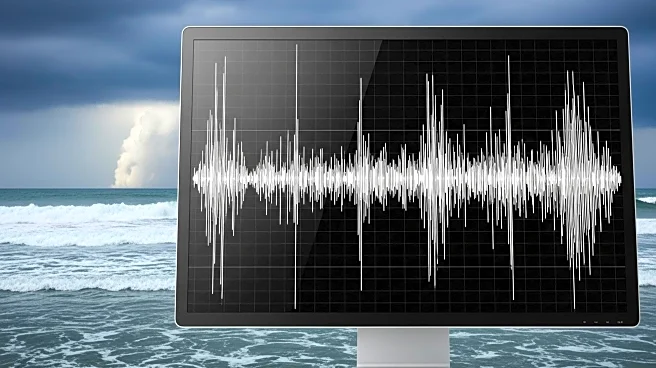What's Happening?
A magnitude 7.4 earthquake struck offshore in the southern Philippines on October 10, 2025, prompting the U.S. Tsunami Warning System to issue a tsunami threat. The earthquake occurred near Manay town in Davao Oriental, part of the Mindanao region. The Philippine Institute of Volcanology and Seismology (Phivolcs) initially reported the quake's magnitude as 7.6 but later revised it to 7.4, with a depth of 14.3 miles. The Pacific Tsunami Warning Center indicated that hazardous waves were possible for coasts within 186 miles of the epicenter. The earthquake resulted in at least one fatality and caused significant damage to infrastructure, including homes, buildings, and bridges. Local disaster officials reported that the quake lasted 30 to 40 seconds, causing panic among residents and leading to the suspension of classes in affected areas.
Why It's Important?
The earthquake's impact highlights the vulnerability of regions situated along the Pacific 'Ring of Fire,' which is prone to seismic activity. The issuance of tsunami warnings underscores the potential for widespread coastal damage and the need for preparedness in affected areas. The event serves as a reminder of the importance of robust disaster response systems and international cooperation in managing natural disasters. The Philippines, having experienced a deadly earthquake just two weeks prior, faces ongoing challenges in disaster management and recovery efforts. The situation also raises concerns about the resilience of infrastructure in earthquake-prone regions and the need for investment in disaster mitigation strategies.
What's Next?
Authorities in the Philippines are assessing the situation and preparing search-and-rescue teams to be deployed when conditions allow. Philippine President Ferdinand Marcos Jr. has stated that efforts are underway to ensure aid reaches those in need. Meanwhile, tsunami warnings remain in effect for parts of Indonesia and Palau, with potential waves of up to 3 feet expected. Local governments and disaster response teams are likely to continue monitoring the situation closely, providing updates and coordinating relief efforts. The event may prompt further evaluations of earthquake preparedness and response strategies in the region.
Beyond the Headlines
The earthquake and subsequent tsunami warnings may lead to increased scrutiny of building codes and infrastructure resilience in the Philippines and neighboring countries. The event could also influence policy discussions on disaster preparedness and international collaboration in the Pacific region. Additionally, the psychological impact on affected communities, including trauma and anxiety, may require attention from mental health professionals and support services.












